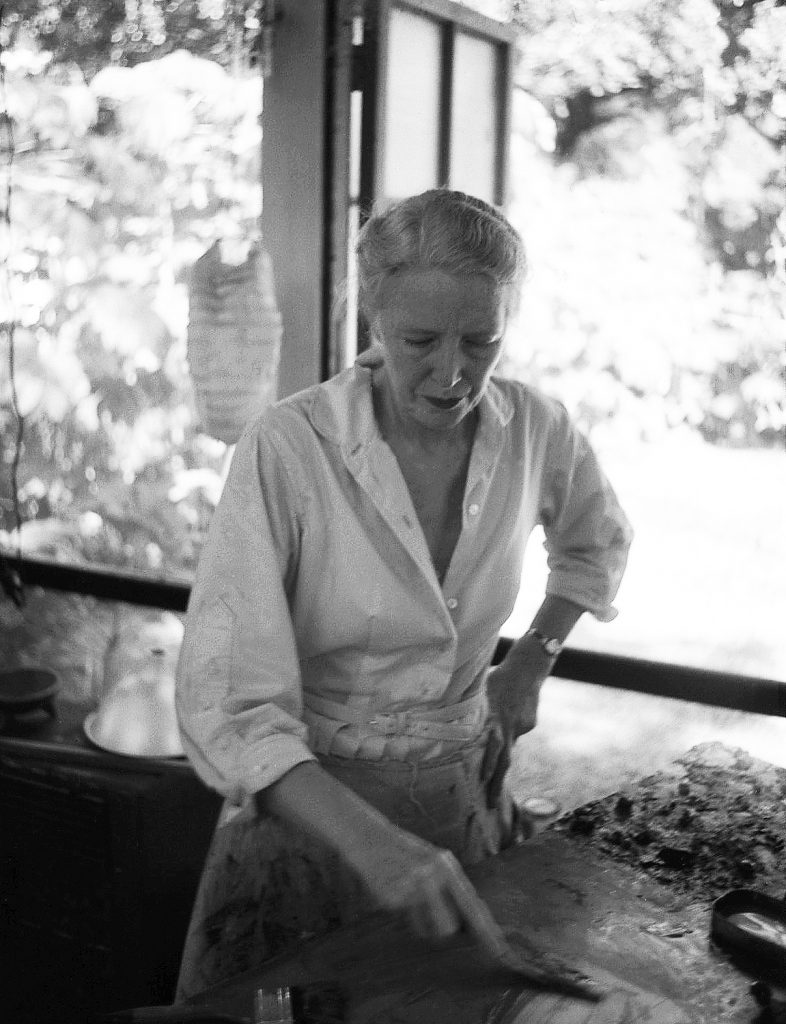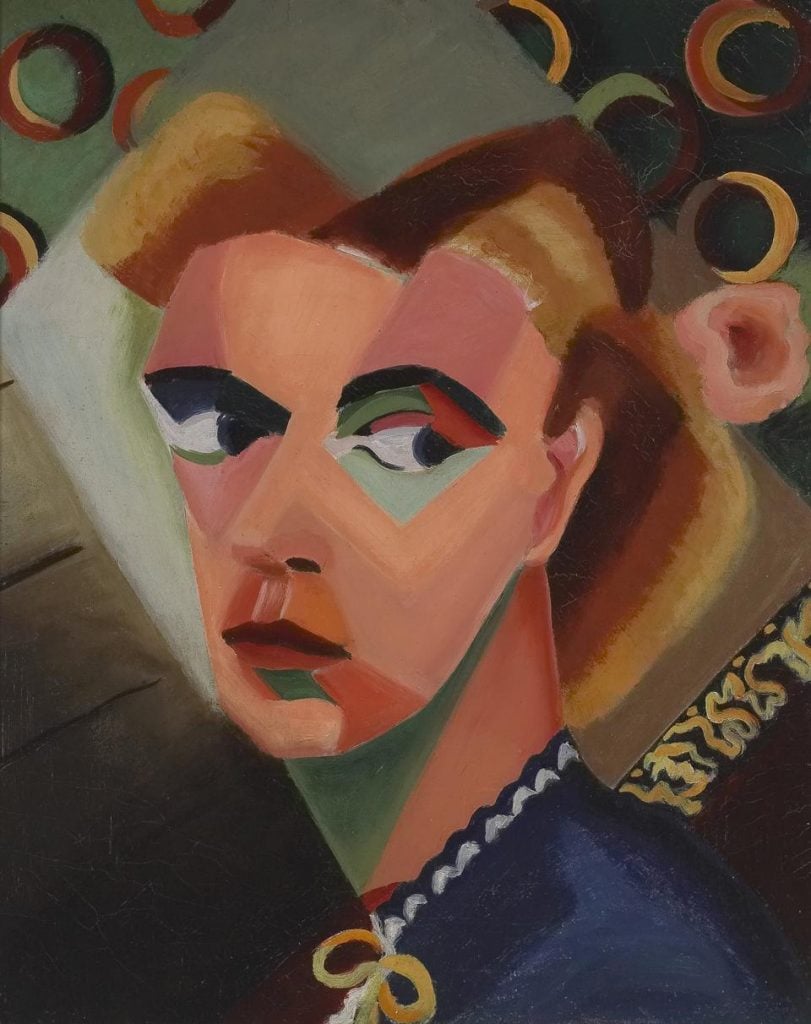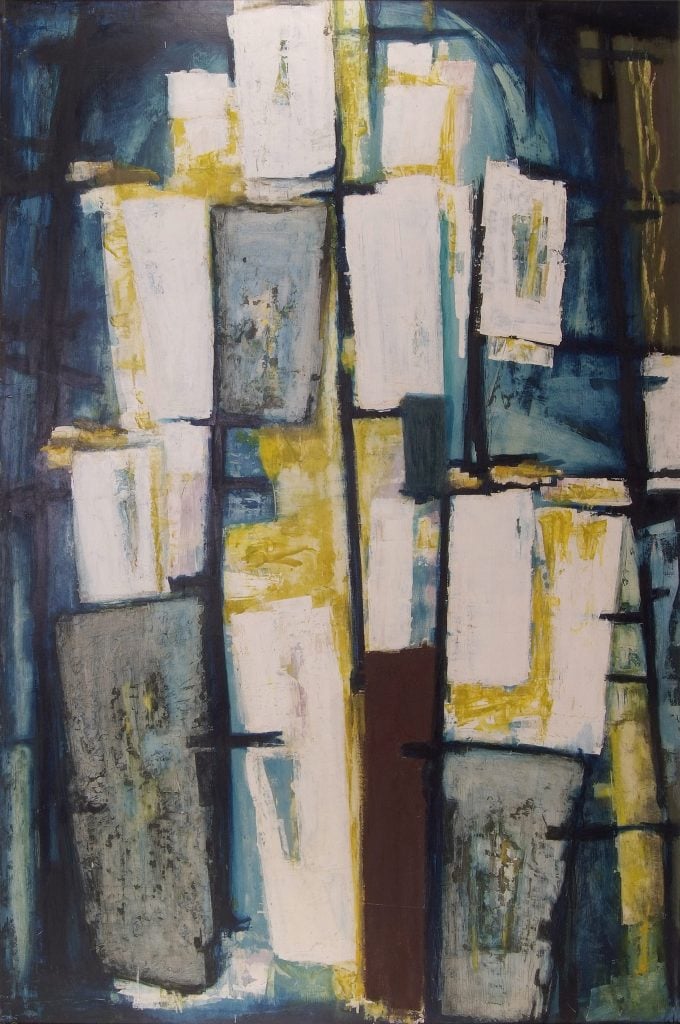Art History
She Was a Trailblazing Modernist Painter and a Close Friend of Betty Parsons. So Why Don’t More People Know Dusti Bongé?
A career retrospective shines a long-overdue spotlight on an artist who refused to make compromises.

A career retrospective shines a long-overdue spotlight on an artist who refused to make compromises.

Katie White

Dusti Bongé (1903–1993) was an actress, a debutante, Mississippi’s first Modern artist, and famed gallerist Betty Parsons’s close friend. Yet for many, her name remains wholly unfamiliar.
Now, “Piercing the Inner Wall: The Art of Dusti Bongé,” a retrospective at the Mississippi Museum of Art, is hoping to change that. The exhibition, which includes some 65 paintings, 29 works on paper, and three sculptures, offers an in-depth look at the experimental and kaleidoscopic career of this little-known artist, and charts how her early Cubist-inspired works grew into captivating Surrealist visions and elegant abstractions.
A new biography by curator J. Richard Gruber (Dusti Bongé, Art and Life: Biloxi, New Orleans, New York) also accompanies the exhibition. (The show was organized by the Ogden Museum of Southern Art in New Orleans, where it first opened in 2019).

Dusti Bongé, Woman in Striped Dress (1938). Collection of the Dusti Bongé Art Foundation.
Often described as a painter of the Deep South, Dusti Bongé was born Eunice Lyle Swetman in Biloxi, Mississippi, the city where she would spend most of her life and find her most long-lasting inspiration.
Though quietly, Bongé’s life flew in the face of the norms of the times. She attended Blue Mountain College before heading off for Chicago and then New York, where she pursued work as a stage actress.
Her nickname, Dusti, was coined by friends of hers in Chicago who said she was always busy washing the city’s dust from her face. The anecdote is telling—Bongé wasn’t really one for city life, even though it clung to her nevertheless.

Dusti Bongé, The Circus Cage (1952). Courtesy of the Paul Bongé Collection.
Art-making came to Bongé first through romance, and then tragedy. She met her husband, the Nebraskan painter Archie Bongé, while he was studying at the Art Institute of Chicago. Atypically for the era, he strongly encouraged her ambitions to pursue art. When they moved to New York, she enrolled in classes at the Art Students League and began to experiment with painting.
Soon after the birth of the couple’s son, Lyle, in 1929, the Bongés decided to return to Biloxi so that Archie could devote himself fully to painting as they raised their child. Tragically, however, after an ALS diagnosis, he died in 1936. Bongé—at just 33, suddenly a widow and single mother—began to paint in earnest in the years following his death, finding solace in the studio, where her husband often encouraged her.
“Piercing the Inner Wall” includes several of these early Cubist-inspired figurations, which reveal her understanding of the trends in the greater art world. By the late 1930s, flickers of Surrealism’s influence began to appear in her paintings and drawings as she became fascinated by dreams and Carl Jung’s writings on the collective unconscious.

Dusti Bongé at her pallette, 1957. Photograph by Lyle Bongé. Courtesy of the Paul Bongé Collection.
Several of her paintings, including perhaps her most famous work, Sunflowers from 1944, were made directly from her dreams.
“She made Sunflowers right after dreaming about a friend in which this image came to her,” says Ligia Romer, executive director of the Dusti Bongé Art Foundation. “She got up in the middle of the night to paint it.”
Bongé even put a small easel and canvas in her bedroom so that she could paint visions from her dreams. About 10 of her so-called “Dream Paintings” are known today.
A sense of place was equally crucial to Bongé, even as she moved fully into abstraction. Many of her early Modernist experiments were of the shrimp boats and factories of Biloxi’s Back Bay, the heart of the city’s industry. Stately mansions line these waterfronts too, but Bongé paid them no mind.
“A certain energy appealed to her,” Romer says. “She liked hustle-and-bustle.” She was, for instance, fascinated by the circus—not the spectacle of the event, but the preparation for it.
“When the circus would come to town, she would go while they were setting up,” Romer says. “She loved watching them pitch the big tent, all the cages, and the animals walking around. She would take her little sketchbook, even in those early years, sit somewhere and sketch.”
In the exhibition, her “Circus” works act as a fascinating touchpoint between her Surrealistic impulses, and her grounded senses of time and place in Mississippi.

Dusti Bongé, Self Portrait—The Balcony (1943). Collection of the Mississippi Museum of Art.
During her lifetime, Bongé remained deeply tied to the New York art world, appearing in a number of exhibitions throughout the 1930s and ’40s. In 1946, Betty Parsons included Bongé in a group exhibition, and the pair soon embarked on a lifelong friendship. Parsons later gave Bongé a solo show in 1956.
“Dusti and Betty Parsons stayed friends right up until Parsons’s death,” Romer says. “They went on trips together to Mexico and the Bahamas. Parsons would come to visit Biloxi, too.”
Through Parsons, Bongé developed friendships with artists including George Dunbar, Hazel Guggenheim, Barnett Newman, and Theodore Stamos. In the 1950s, Parsons tried to convince Bongé to relocate to New York, promising to make her famous. But the artist returned to Biloxi after just a few months.
“Part of the reason for her obscurity is, of course, the fact that she was a woman,” Romer says. “But perhaps more importantly, it’s because she ultimately always chose to stay in Biloxi to work. She was rooted in and inspired by her home.”
But in no sense, as the exhibition makes clear, did this isolate the artist from the discourse and developments of the times. In fact, with a bit of distance from New York, she experimented and mixed styles more freely.

Dusti Bongé, Windows. Courtesy of the Paul Bongé Collection.
By the mid-1950s, Bongé had made a full leap into abstraction. Her “Windows” series teeters between the stained glass windows of cathedrals, and purely abstracted planes of color. Fifty years into her painting career, she continued to delve into different stylistic approaches, beginning her “Void” series of celestial-like spheres in the 1980s.
An enduring sense of curiosity runs throughout the series. “I think you can move through the galleries and admire someone who is improvising and really experimental in her own way,” Ryan Dennis, chief curator of the Mississippi Museum of Art, told Forbes.
In her lifetime, Bongé was unperturbed by her lack of wider recognition, devoting more time to her craft than to pursuing fame.
“There was a certain humility to her—she was, at least in her mind, just a widow from a small town,” Romer says. Her paintings, this exhibition seems to say, nevertheless had much grander ambitions.